
 Is the consumer just paying lip service in the enthusiasm for environmentally friendly and sustainability? Or are we approaching a paradigm shift?
Is the consumer just paying lip service in the enthusiasm for environmentally friendly and sustainability? Or are we approaching a paradigm shift?
Temperature control is one of the most important technological improvements ever in the wine world. Other technologies have also in various ways improved the wines and simplified the production.
Robots are bottling and packing, drones are flying over the vineyards and detecting diseases. Hi-tech is now part of the wine industry.
Yet we are now at a new kind of break-point, it seems.
The fact that some winegrowers replace the oak barrels with amphorae, the stainless steel with concrete, favour wild yeast and reduce the sulphur means that wine enthusiasts get exciting wines to talk about, but that is not what it is about.
There is something much more revolutionary going on. We are about to abandon conventional agriculture. Despite all the talk about organic, sustainable and natural, 85-90% of all agricultural land is still farmed using chemical synthetic products. Products that have secured harvests and made the job easier for farmers for approximately 70 years.
Synthetic fertilizers helped to feed many mouths in the early 1900s. Pesticides rationalised agriculture after World War II. This was positive, many people thought then.
Now we think it is positive that there is a change towards more sustainable agriculture, which means that we abandon the synthetic products, partly or wholly. It is a tremendous change. And not something that everyone in the agricultural industry is necessarily happy about.
The EU has very recently set ambitious targets for reducing the use of pesticides in agriculture. The use of pesticides should be reduced by 50% and 25% of the total agricultural area should be cultivated organically by 2030. This is very ambitious given that today only 7.5% of the total agricultural area in the EU is organic. For vineyards, the figure is 13%, but vineyards represent only a few per cent of all agricultural land.
Will it succeed? Probably not.
It also does not mean that there is a simple and obvious solution that suits everyone. To think that the answer is as simple as “everyone should be organic” is far too simplistic. Perhaps what is most likely is that we will continue to see a mix of methods, but that we will nevertheless see a radical change towards things that are considered environmentally friendly and sustainable.
What happens when farmers/growers use fewer synthetic pesticides? In some cases, it will be more expensive and in many cases, it will mean extra work.
Removing weeds was a tiring process before there was chemical weed control. Now glyphosate, the active substance in many herbicides, is on the verge of being banned in France in 2022. Several wine regions in France and Italy have already banned it. If this is a decision based on facts and science is not something that everyone agrees on.
Sure, many vineyards have already stopped removing weeds and let the grass grow instead. But many still use herbicides, not least directly under the vines. It is time-consuming to remove the grass under the vines with the tractor. On steep slopes where you cannot drive a tractor, you have to remove the weeds by hand, with a pick. Some already do.
Perhaps the most important question is whether we wine consumers are prepared to pay extra, pay more for our wines to, for example, keep the beautiful vineyards of the Alps?
Or perhaps, more importantly, are we prepared to pay a little extra money for the wines so that the winery workers in South Africa – and in many other wine districts – can make a decent living?
Are we prepared to pay for the kind of products that we say we want?
A few other things to think about:
Monday Masterclass on organic wines
If you want to know more about organic, biodynamic and “natural” you can sign up for the online conference we will do on Monday. It is the English wine education organization WineEd that has asked us to make a presentation, a half-hour “Monday Masterclass”, of what this type of wine production is really about. On Monday June 1 at 2 PM English time. Book your seat at WineEd’s masterclass here.
If you want to know more, you can read our book on organic wines.
A few words about wine tours and the world
The world seems to be making progress, but slowly, in the fight against covid-19. Many countries are beginning to release restrictions. But it is very uncertain how fast it will go and how the development will be. We don’t really know anything about what the situation will be this fall.
Since the end of March, we have cancelled all our tours, all our spring tours. But what will happen in the autumn? No one can answer that question today.
At BKWine, we have a number of wine tours planned in the fall, as well as in the winter of 2021. Will they really happen? We do not know. It depends on the health situation in Europe and in the rest of the world. We probably won’t know more until well into the summer.
What we do know with great certainty, however, is that sooner or later the desire to travel will come back and that it will again be possible to visit wine regions and meet winemakers. Experience great meals and taste delicious wines. Travel through beautiful landscapes and lush vineyards. Many wineries have already begun to open up on a small scale.
And when you you feel the urge to travel again, what we also know for sure is that we will be there, BKWine Wine Tours, and we will continue to organize the world’s best wine tours. Just for you.
Keep us in mind when you want to travel to the world’s wine regions again! We really look forward to meeting you.
Until then, we will entertain you and your interest in wine with lots of texts and pictures and videos. So that you don’t forget.
You can, for example, connect with us on Instagram and on Facebook, with lots of travel pictures.
Britt & Per
PS: Recommend to your friends to read the Brief!
– – – – –
What’s on at BKWine Tours
- Champagne, September 16-20, 2020
- Bordeaux, September 30 – October 4, 2020
- South America, Chile and Argentina, January 18 – 31, 2021
- New Zealand, February 18 – March 5, 2021
- South Africa, March 17 – 26, 2021
For more information please contact us on email or on phone (we’re on French time), or go to our wine travel site on www.bkwinetours.com!
We also make custom designed wine tours – on-demand tours for you and a group of friends, for your company (maybe to scout new winegrowers?), for a special event… We can combine winery visits and wine touring with other activities: gastronomic workshops, visit to an oyster farm, truffles hunting, cheese making, and more. More info on the custom designed and bespoke BKWine wine tours and travel here!
Read our book(s)
We have written several wine books, nine at the last count. One of them has been translated to English; the others are (so far) only available in Swedish. This is the one that is available in English: Biodynamic, Organic and Natural Winemaking, Sustainable Viticulture and Viniculture
All our books are on wine, but on different subjects: wines of the Languedoc, wine growing and wine making, the wines of France, Tuscany, Bordeaux, Piedmont, Burgundy, Champagne. Several have won prestigeous prizes and awards. Read more on our wine books.
From the World of Wine
In Brief
In short, news and stuff from the world of wine.
Organic and biodynamic viticulture in Médoc: Château Fourcas Hosten
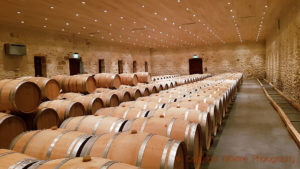 Château Fourcas-Hosten is one of our favourite châteaux in the Médoc. Lovely, classic Bordeaux wines at a price you wouldn’t have thought existed anymore in Médoc. One reason is that the chateau happens to be in Listrac, an appellation that doesn’t have the possibility to charge the same high prices as the more famous Pauillac, Margaux etc. A few years ago, Fourcas Hosten started working organically and is now experimenting with biodynamic farming.
Château Fourcas-Hosten is one of our favourite châteaux in the Médoc. Lovely, classic Bordeaux wines at a price you wouldn’t have thought existed anymore in Médoc. One reason is that the chateau happens to be in Listrac, an appellation that doesn’t have the possibility to charge the same high prices as the more famous Pauillac, Margaux etc. A few years ago, Fourcas Hosten started working organically and is now experimenting with biodynamic farming.
Sophie Solnicki-Thierry is the marketing director and she says that they introduced organic farming step by step on the 48 hectares of the château. They started with the small plot of white grapes and the white Le Blanc de Fourcas Hosten will be certified for the harvest 2020. The red grapes have been in conversion since 2018 so Château Fourcas Hosten and the second wine Les Cèdres d’Hosten will be certified organic in 2021. “We started experimenting with biodynamic farming on 16 hectares in 2018”, says Sophie, “and we continued with the same plot in 2019”. The work now continues on the whole property under the guidance of the newly appointed General Director Eloi Jacob. Read more: fourcas-hosten
Travel: Join us on a great classics wine tour to Bordeaux.
Prosecco rosé is launched
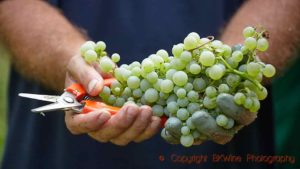 It was expected. The strange thing is that it didn’t happen until now. Prosecco producers are now authorized to make prosecco rosé. Something many have long waited for. A prosecco rosé is made by adding 10 to 15% of red wine from the Pinot Nero grape. The process is otherwise the usual one with a second fermentation in tank, called the martinotti method in Italy. Harvest yields remain high: a maximum of 18,000 kg per hectare (around 120 hl/ha) for Glera, the white grape, and 13,500 kg for Pinot Nero.
It was expected. The strange thing is that it didn’t happen until now. Prosecco producers are now authorized to make prosecco rosé. Something many have long waited for. A prosecco rosé is made by adding 10 to 15% of red wine from the Pinot Nero grape. The process is otherwise the usual one with a second fermentation in tank, called the martinotti method in Italy. Harvest yields remain high: a maximum of 18,000 kg per hectare (around 120 hl/ha) for Glera, the white grape, and 13,500 kg for Pinot Nero.
However, the wine must remain 60 days in the tank, as opposed to only 30 days for a white prosecco. The rosé will be available in three versions only, brut nature, brut and extra dry. In extra dry the sugar contents is 12-17 gram per litre. So, nothing sweeter than that. White prosecco can also be “dry” (which means rather sweet), with between 17 and 32 grams of sugar per litre. The Prosecco DOC Consorzio expects the production of prosecco rosé to amount to 30 million bottles annually. It remains to be seen whether the boom for sparkling and rosé wines continues. If it does, well, then we know who the winners will be. Read more: prosecco.wine
Wine without sulphites if you choose the right yeast.
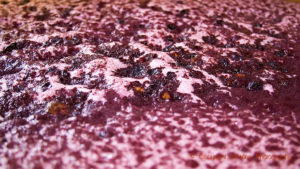 Some people see red when they hear someone say “added yeast”. But that does not prevent most wine producers from choosing cultivated (selected) yeast over wild yeast. There are over 200 varieties of Saccharomyces cerevisiae on the French market. Every year, new yeast strains are launched. And every year the Institut Français de la Vigne et du Vin (IFV) tests all these new strains and publishes the results. What is important to know in order to choose the right yeast is, for example, how much volatile acidity and how much glycerol does the yeast produces, at which alcohol levels and temperatures it can work, how much sulphur dioxide it produces, how much nitrogen it needs to work etc.
Some people see red when they hear someone say “added yeast”. But that does not prevent most wine producers from choosing cultivated (selected) yeast over wild yeast. There are over 200 varieties of Saccharomyces cerevisiae on the French market. Every year, new yeast strains are launched. And every year the Institut Français de la Vigne et du Vin (IFV) tests all these new strains and publishes the results. What is important to know in order to choose the right yeast is, for example, how much volatile acidity and how much glycerol does the yeast produces, at which alcohol levels and temperatures it can work, how much sulphur dioxide it produces, how much nitrogen it needs to work etc.
The amount of sulphur the yeast produces is today a topical issue. Virtually all yeast strains produce some sulphur during fermentation. But there are varieties that produce very little, even below the 10 mg which is the limit for putting “contains sulphites” on the label. Normally, the yeast will produce between 20 and 40 mg of sulphur, which thus is an inevitable level of sulphur in many wines. Most producers add some more to guarantee the stability and quality of the wine. Many of those who are enthusiastic about wines without sulphur (e.g. natural wine fans) are simultaneously very negative towards added yeast. It is perhaps a bit ironic then that you can lower the level of sulphur in the wine by using selected yeast. Read more: vignevin
Fewer wine producers and wine consumers in France, but more beer-drinkers
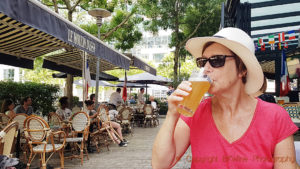 Like the other major wine countries in Europe, France’s wine industry has undergone major changes in recent years. From the 1960s, the vineyard surface declined for many years. However, since a couple of years, it has increased again, albeit very little, and today stands at 790,000 hectares. France accounts for just over 16% of world wine production. The number of wineries has decreased in recent years. In 1990, there were 290,000. In 2000, the figure had dropped to 110,000 and today it is down to 85,000. The average size of a wine estate is 8.8 hectares.
Like the other major wine countries in Europe, France’s wine industry has undergone major changes in recent years. From the 1960s, the vineyard surface declined for many years. However, since a couple of years, it has increased again, albeit very little, and today stands at 790,000 hectares. France accounts for just over 16% of world wine production. The number of wineries has decreased in recent years. In 1990, there were 290,000. In 2000, the figure had dropped to 110,000 and today it is down to 85,000. The average size of a wine estate is 8.8 hectares.
Wine consumers have grown older. According to La Revue du Vin de France, a wine magazine, 78% of all wine in France is consumed by consumers over 50 years of age. The number of people who drink wine regularly (almost every day) has decreased from 50% in 1980 to 17% today. Only 20% of young people (under 30) believe that they will drink wine in the future. How should the young people be tempted to abandon the beer that has now also been given a new allure with its many microbreweries? Wine is old-fashioned. Beer is modern and trendy. French wine industry faces major challenges. And not all of them are about Covid-19. Statistics from oiv.org and La Revue du Vin de France.
Large increase in organic wines in Europe
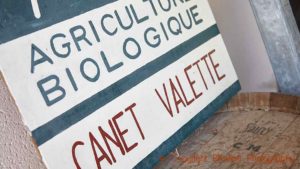 Between 2012 and 2017, the organic wine surface increased dramatically in Europe. In Italy, it increased by 84% and in Spain by 32%. Italy now has 106,400 hectares of organic vineyards, of which 30% is under conversion. 16% of the Italian vineyards are thus organic. Spain has 113,400 hectares, which is 12% of the Spanish vineyards. 21% is under conversion. France increased to a lesser extent during the same period but made up for it in 2018 with an increase of 20%. France now has 94,000 hectares, which is 12% of the surface of the French vineyards. 31% of these 94,000 ha is in conversion.
Between 2012 and 2017, the organic wine surface increased dramatically in Europe. In Italy, it increased by 84% and in Spain by 32%. Italy now has 106,400 hectares of organic vineyards, of which 30% is under conversion. 16% of the Italian vineyards are thus organic. Spain has 113,400 hectares, which is 12% of the Spanish vineyards. 21% is under conversion. France increased to a lesser extent during the same period but made up for it in 2018 with an increase of 20%. France now has 94,000 hectares, which is 12% of the surface of the French vineyards. 31% of these 94,000 ha is in conversion.
Wine consumers are demanding more and more organic wine and according to some data, all three major wine countries need to speed up the conversion rate to meet this demand. Spain and Italy export around 90% of their organic production, while France exports only 42%. Read more: agencebio
Read: To know more about this read our book on organic and biodynamic wines.
The EU presents ambitious plans for organic farming
At the end of 2019, the EU introduced a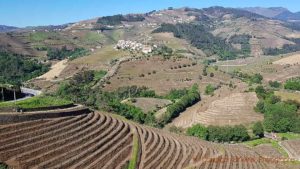 comprehensive environmental program called “The European Green Deal” to make EU agriculture sustainable. Now, Commissioner Stella Kyriakides has announced certain goals that have been set up as part of this work. One goal is for organic agriculture to reach at least 25% of the total area by 2030. It is only 10 years from now and it feels very ambitious indeed. At present, the organic agricultural area in the EU is 7.5% of the total area. The percentage of the vineyard area that is organic is larger than for other agricultural sectors (see our other piece on the growth of organic wine growing), but viticulture accounts for a very small part of all agriculture in the EU. Read more: theparliamentmagazine
comprehensive environmental program called “The European Green Deal” to make EU agriculture sustainable. Now, Commissioner Stella Kyriakides has announced certain goals that have been set up as part of this work. One goal is for organic agriculture to reach at least 25% of the total area by 2030. It is only 10 years from now and it feels very ambitious indeed. At present, the organic agricultural area in the EU is 7.5% of the total area. The percentage of the vineyard area that is organic is larger than for other agricultural sectors (see our other piece on the growth of organic wine growing), but viticulture accounts for a very small part of all agriculture in the EU. Read more: theparliamentmagazine
Read: To know more about this read our book on organic and biodynamic wines.
Oak barrels partly made from plastic keeps better the fruit of the wine
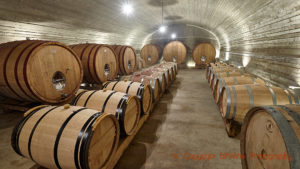 Does the wine taste less oaky if the ends of the barrel, the heads, are made of polyethylene instead of oak? Yes it does, apparently. The ingenuity has no boundaries when it comes to making the wine taste less oaky even though it has been aged in oak barrels. Today, winemakers often say that they want the small aeration that the wine gets while spending time in an oak barrel, but they do not want any oak aromas. One solution could be this new idea that a company called Jabb has developed.
Does the wine taste less oaky if the ends of the barrel, the heads, are made of polyethylene instead of oak? Yes it does, apparently. The ingenuity has no boundaries when it comes to making the wine taste less oaky even though it has been aged in oak barrels. Today, winemakers often say that they want the small aeration that the wine gets while spending time in an oak barrel, but they do not want any oak aromas. One solution could be this new idea that a company called Jabb has developed.
With the either one or both of the flat ends, the “heads”, of a 225-litre oak barrel made of polyethylene instead of oak, the wine will be fruitier and more easy-drinking directly after the oak ageing, says the company. This is confirmed by a château in Pomerol that has tried the oak/polyethylene combination. Read more: vitisphere
Features
Features that we have published during the past month, with lots of reading for you.
A barolo with a heavy-weight punch: Parusso
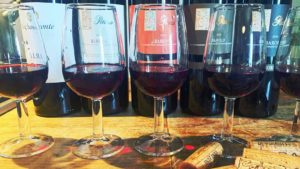 “’I want to give everything, I only live once and I want to give everything I have,’ says Marco Parusso from the eponymous wine estate in Monforte d´Alba in Barolo. You can feel that in the wines. There’s a lot of everything. Fruit. Colour. Tannins. ‘Tannins are the hallmark of Barolo and they should be there,’ says Marco. Less is more, does not exist here. That’s for sure. Since Marco started working in the family winery in 1986, along with his sister Tiziana, a lot of time has been spent researching and trying new techniques to make barolo wines that he likes himself.”
“’I want to give everything, I only live once and I want to give everything I have,’ says Marco Parusso from the eponymous wine estate in Monforte d´Alba in Barolo. You can feel that in the wines. There’s a lot of everything. Fruit. Colour. Tannins. ‘Tannins are the hallmark of Barolo and they should be there,’ says Marco. Less is more, does not exist here. That’s for sure. Since Marco started working in the family winery in 1986, along with his sister Tiziana, a lot of time has been spent researching and trying new techniques to make barolo wines that he likes himself.”
Read more in Åsa Johansson’s article on BKWine Magazine: Parusso – Barolo with plenty of everything.
Uncorked: Good wines we have tasted recently, May 2020
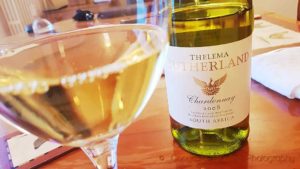 Uncorked: Under this heading, we collect various wines that we have tasted, and liked, recently. It can be wines that we have had during dinner at home, at wine tastings, press lunches, visits to vineyards, or other occasions.
Uncorked: Under this heading, we collect various wines that we have tasted, and liked, recently. It can be wines that we have had during dinner at home, at wine tastings, press lunches, visits to vineyards, or other occasions.
This month: Delicious and rare wines from South Africa and Argentina. Prestige wine from Moldova, a lovely 15-year-old Cornas, a surprise from Australia, a rare 100 % petit verdot. And also tannat, Douro Valley, Etna and some more. And even a grape I had never tasted before.
Read more in Britt’s article on BKWine magazine: Uncorked: Good wines we have tasted recently, May 2020
Which are the winners and losers among the world’s sparkling wines? | Britt on Forbes
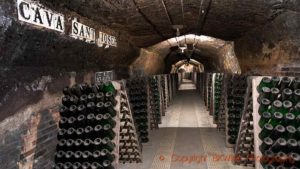 “Wine consumers around the world drink sparkling wines like never before. The message from producers and wine writers has been clearly understood. Bubbles can be drunk at all times and not just when you are celebrating. The production has increased by 57% since 2002. The world now produces 2.5 billion bottles or sparkling wine. This is just under 8% of the world’s total wine production of 32.5 billion bottles. We have looked at newly published statistics about which countries and regions produce all these bubbles and how the markets look for production, export, consumption etc.”
“Wine consumers around the world drink sparkling wines like never before. The message from producers and wine writers has been clearly understood. Bubbles can be drunk at all times and not just when you are celebrating. The production has increased by 57% since 2002. The world now produces 2.5 billion bottles or sparkling wine. This is just under 8% of the world’s total wine production of 32.5 billion bottles. We have looked at newly published statistics about which countries and regions produce all these bubbles and how the markets look for production, export, consumption etc.”
Read more in Britt’s article on BKWine Magazine, originally published on Forbes.com: The world market for sparkling wines. Which are the winners and losers? | Britt on Forbes.
Travel: Join us on a wine tour to the famous Champagne region.
Four top-quality wine producers from South Africa
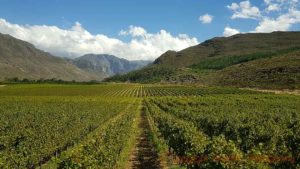 If you are planning a wine tour later on to South Africa, the best way to prepare is to drink South African wines. We have many favourites. Read below about four excellent producers we sometimes (or regularly) visit on our tours to South Africa.
If you are planning a wine tour later on to South Africa, the best way to prepare is to drink South African wines. We have many favourites. Read below about four excellent producers we sometimes (or regularly) visit on our tours to South Africa.
- Glenwood, Franschhoek
- Stark-Condé, Stellenbosch
- Post House, Stellenbosch
- The Ahrens Family, Paarl
Read more on these producers in Britt’s article on BKWine Magazine: Four top-quality wine producers from South Africa.
Travel: Join us on a fabulous wine tour to South Africa.
Wine tours
Some information about current and future wine tours with BKWine.
Bordeaux, grand and famous chateaux and family estates | wine tour
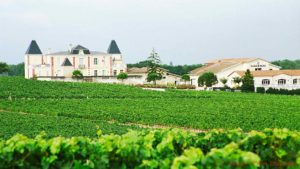 At this moment it is too early to know what will be possible to do this autumn. So, for the moment, we have a Bordeaux tour planned: We will visit Medoc, Saint Emilion, Sauternes and other famous appellations on this exciting tour. We will be in Bordeaux in harvest time so a lot of exciting activities in the vineyards and in the cellars. Our lunches will be prestigious meals at the chateaux with matching wines. Bordeaux is a must for a wine lover, at least once.
At this moment it is too early to know what will be possible to do this autumn. So, for the moment, we have a Bordeaux tour planned: We will visit Medoc, Saint Emilion, Sauternes and other famous appellations on this exciting tour. We will be in Bordeaux in harvest time so a lot of exciting activities in the vineyards and in the cellars. Our lunches will be prestigious meals at the chateaux with matching wines. Bordeaux is a must for a wine lover, at least once.
Three tours to four New World countries in the southern hemisphere during the winter of 2021
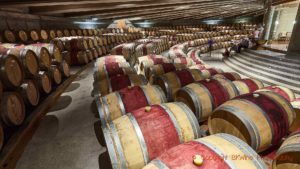 Our long-distance wine tours in early 2021 will take us to Chile and Argentina, New Zealand and South Africa. We can promise you three spectacular tours that you will long remember. Provided things return a little bit to normal.
Our long-distance wine tours in early 2021 will take us to Chile and Argentina, New Zealand and South Africa. We can promise you three spectacular tours that you will long remember. Provided things return a little bit to normal.
Today, it is too early to say if these tours will be possible to do or not, considering the world situation, but if all goes well we will go ahead with them.
Chile and Argentina
Our very popular South American tour will take you to Buenos Aires, the wine region of Mendoza, across the border to Chile’s various wine regions and finish in the Chilean capital Santiago. Our bus will take us across the Andes, a breathtaking journey across the world’s longest mountain range. We will meet young and ambitious wine growers, enjoy wonderfully grilled meat and freshly baked empanadas, Chile’s beautiful coast at Viña del Mar, the famous seaport city of Valparaiso and much more.
New Zealand
This fantastic 2-week trip showcases all of New Zealand, from Auckland on the North Island down to Queenstown on the South Island. An experience that includes a 3-hour boat trip between the two islands, natural phenomena such as geysers and bubbling mud pools, Maori culture, meetings with winemakers and many wine tastings in famous wine regions such as Marlborough, Hawke’s Bay and Central Otago.
South Africa
It is an experience today to visit the South African wine regions. The wines have never been as good and exciting as they are now. The ambition of the producers is high and they are very eager to show what they are capable of. We will visit the classic regions of Stellenbosch and Franschhoek, but also exciting Walker Bay down on the cool south coast as well at hot and trendy Swartland.
- South America, Chile and Argentina, January 18–31, 2021
- New Zealand, February 18–March 5, 2021
- South Africa, March 17–26, 2021
Don’t be an egoist! Share with your friends and other wine enthusiasts! Forward the Brief to your friends! Suggest that they sign up for a free subscription !
© Copyright BKWine






